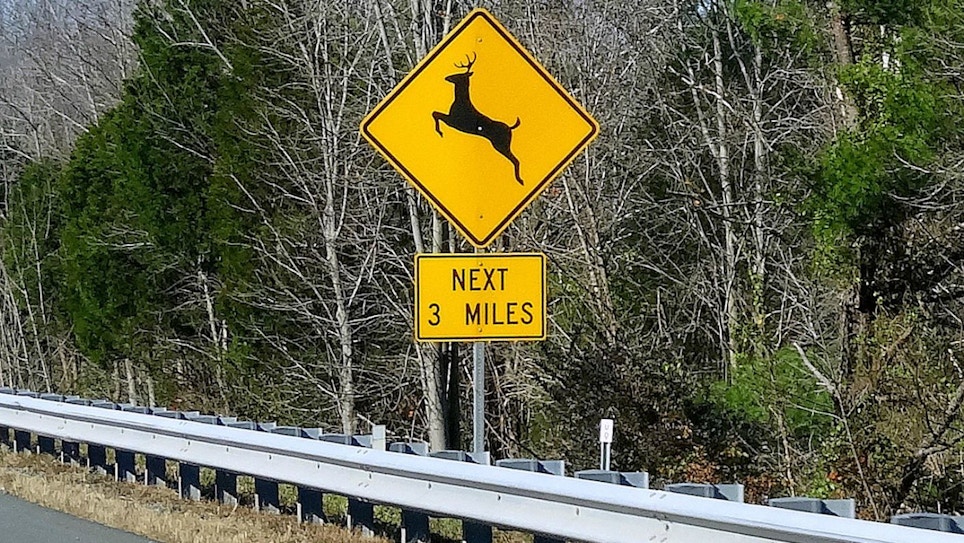On average, approximately 200 deaths occur each year in the United States due to vehicle/deer collisions, with $1 billion — with a “b” — in property damage. Knock on wood, I’ve never hit a deer, but I have come close.
(Note: Just recently I took out what I think would’ve been Minnesota’s state record raccoon with the left front tire of my Toyota Corolla while traveling 60 mph. Not good. After finishing this article, I plan to drive my Corolla to a nearby auto body shop for an estimate on fixing significant damage to the car’s inner fender well liner and left side front panel.)
Of course, your chances of hitting a deer go up dramatically if you live and travel in a state with a high deer population. In much of the Midwest, with an ideal blend of forest and agricultural fields, whitetail numbers are very high. The whitetail population can also be quite high in the eastern United States, especially in wooded suburban areas where there’s little or no deer hunting allowed.
Through my 40 years of driving in prime whitetail country, namely Minnesota, South Dakota and Wisconsin, I’ve learned a few tips for avoiding vehicle/deer collisions. Keep these in mind the next time you hit the road.
1. Use High Beams
The vast majority of vehicle/deer collisions could be avoided if drivers used their car or truck’s high beams as much as possible. You don’t want to blind those drivers heading toward you, and you don’t want to blast high beams on the rear of a vehicle in your lane, but use your high beams as much as you can to see better. Yes, it’s a hassle clicking high beams on and off as you drive, but it’s critical to spotting deer.
2. Notice Deer Crossing Signs
There’s a reason why state transportation departments place deer crossing signs in certain spots — history has shown that this portion of a road is especially dangerous for vehicle/deer collisions. When you see these signs, slow down and watch for deer on the road and in the ditches.
3. Be Alert During Dawn and Dusk
Whitetails and other big game animals travel most during low-light periods, which means dawn, dusk and after dark. When possible, try to plan your trips outside these windows of maximum deer activity.
4. Be Alert During Whitetail Breeding Season
Called “the rut” by hunters, the whitetail breeding season in the Midwest takes place from late October through the end of November. Bucks are looking for a doe in heat, and they travel widely during this period. Also, many firearm deer seasons take place during the rut, so more hunters in the woods means more deer being pushed around, resulting in more deer running across fields and across roads. Be alert.
5. Look for More Than One Deer
Rutting bucks can often show up in a road solo, but they can also be trailing a doe. So if a doe runs across the road in November, there’s a decent chance a buck will follow. Also, during all other parts of year, deer often travel in family groups. It’s very common for a doe to be with one or two of her fawns. If you see one deer in the road or standing in the ditch, chances are very high that another deer or two is nearby. Slow down and expect to see more animals.
6. Notice Habitat Changes
This one is tied to tip No. 2, and I’m listing it last because it’s likely that only deer hunters will understand it fully. Whitetails almost always cross roads in predictable places for predictable reasons, and the primary one is food. For example, a section of road that features a thick woods on one side and a freshly picked corn field on the other is prime for vehicle/deer collisions. Whitetails bed in the forest and then travel to the field to feed. At sunset (and an hour or two later) deer will be heading toward the field, and at sunrise (and an hour or two earlier) they’ll be heading back toward the woods to bed. During summer, deer love to eat soybean leaves and feed on clover and alfalfa. Notice these fields. As you drive through the country, look for these habitat changes, and be especially careful on road sections with woods on one side and a prime food source on the other.






